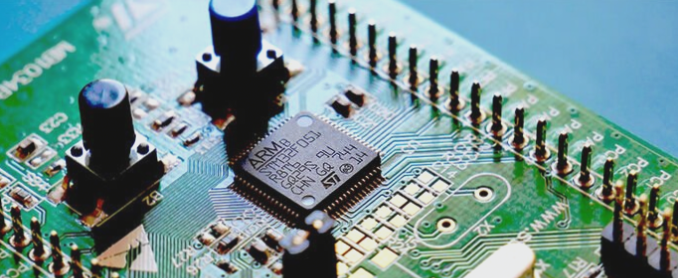1. From a quality perspective, when selecting the PCB board process, resin plug holes offer benefits, albeit introducing an additional step in the process flow. However, in terms of cost-effectiveness, resin plug holes are more economical compared to their counterparts. Oil plug holes incur significantly higher costs, with green oil plug holes streamlining the overall process, compatible with surface ink operations within a combined clean room setting. Alternatively, the plugging process can precede printing, though the quality of the resulting plug hole is inferior to resin plug holes. Green oil plug holes may contract post-fixation, posing challenges for customers with stringent design or quality requirements.
2. PCB boards typically opt for resin plug holes, particularly for BGA (Ball Grid Array) parts. Traditional BGA configurations might necessitate vias between PADs to the wiring’s underside. However, dense BGAs may impede via clearance, prompting direct drilling from PADs to establish vias to alternate layers for routing wires. Subsequently, resin fills these holes, plating copper into the PAD, a process commonly referred to as VIP (via in pad). Failure to plug the holes with resin after via creation can lead to tin leakage, resulting in rear short circuits and front solder voids.
3. The PCB board resin plugging process encompasses drilling, electroplating, plugging, baking, and grinding. Following drilling, holes undergo plating before resin filling and baking, culminating in polishing and grinding. As it lacks copper, an additional copper layer is necessary to convert it into PAD. These procedures precede the original PCB drilling process, prioritizing fortress hole treatment followed by other perforations.
4. Typically, green oil windows denote through-holes with a diameter of 0.35MMC or more, intended for plug-ins devoid of insulating green oil. Mainly catering to subsequent BGA PCB multi-layer circuit board motherboards in SMT production, green oil plug holes address holes with diameters below 0.35MMC. Plug holes prevent non-part holes from succumbing to natural oxidation and corrosion over time, ensuring sustained electrical integrity. BGA plug holes adhere to a standard of opacity, ideally filled two-thirds, as ink cannot seal the hole post-plugging, as demanded by certain BGA specifications.
5. The primary distinction between PCB board resin plug holes and green oil plug holes lies in their plugging solidity. However, resin plug holes possess an advantage over green oil plug holes in terms of acid and alkali resistance.
2. PCB boards typically opt for resin plug holes, particularly for BGA (Ball Grid Array) parts. Traditional BGA configurations might necessitate vias between PADs to the wiring’s underside. However, dense BGAs may impede via clearance, prompting direct drilling from PADs to establish vias to alternate layers for routing wires. Subsequently, resin fills these holes, plating copper into the PAD, a process commonly referred to as VIP (via in pad). Failure to plug the holes with resin after via creation can lead to tin leakage, resulting in rear short circuits and front solder voids.
3. The PCB board resin plugging process encompasses drilling, electroplating, plugging, baking, and grinding. Following drilling, holes undergo plating before resin filling and baking, culminating in polishing and grinding. As it lacks copper, an additional copper layer is necessary to convert it into PAD. These procedures precede the original PCB drilling process, prioritizing fortress hole treatment followed by other perforations.
4. Typically, green oil windows denote through-holes with a diameter of 0.35MMC or more, intended for plug-ins devoid of insulating green oil. Mainly catering to subsequent BGA PCB multi-layer circuit board motherboards in SMT production, green oil plug holes address holes with diameters below 0.35MMC. Plug holes prevent non-part holes from succumbing to natural oxidation and corrosion over time, ensuring sustained electrical integrity. BGA plug holes adhere to a standard of opacity, ideally filled two-thirds, as ink cannot seal the hole post-plugging, as demanded by certain BGA specifications.
5. The primary distinction between PCB board resin plug holes and green oil plug holes lies in their plugging solidity. However, resin plug holes possess an advantage over green oil plug holes in terms of acid and alkali resistance.




